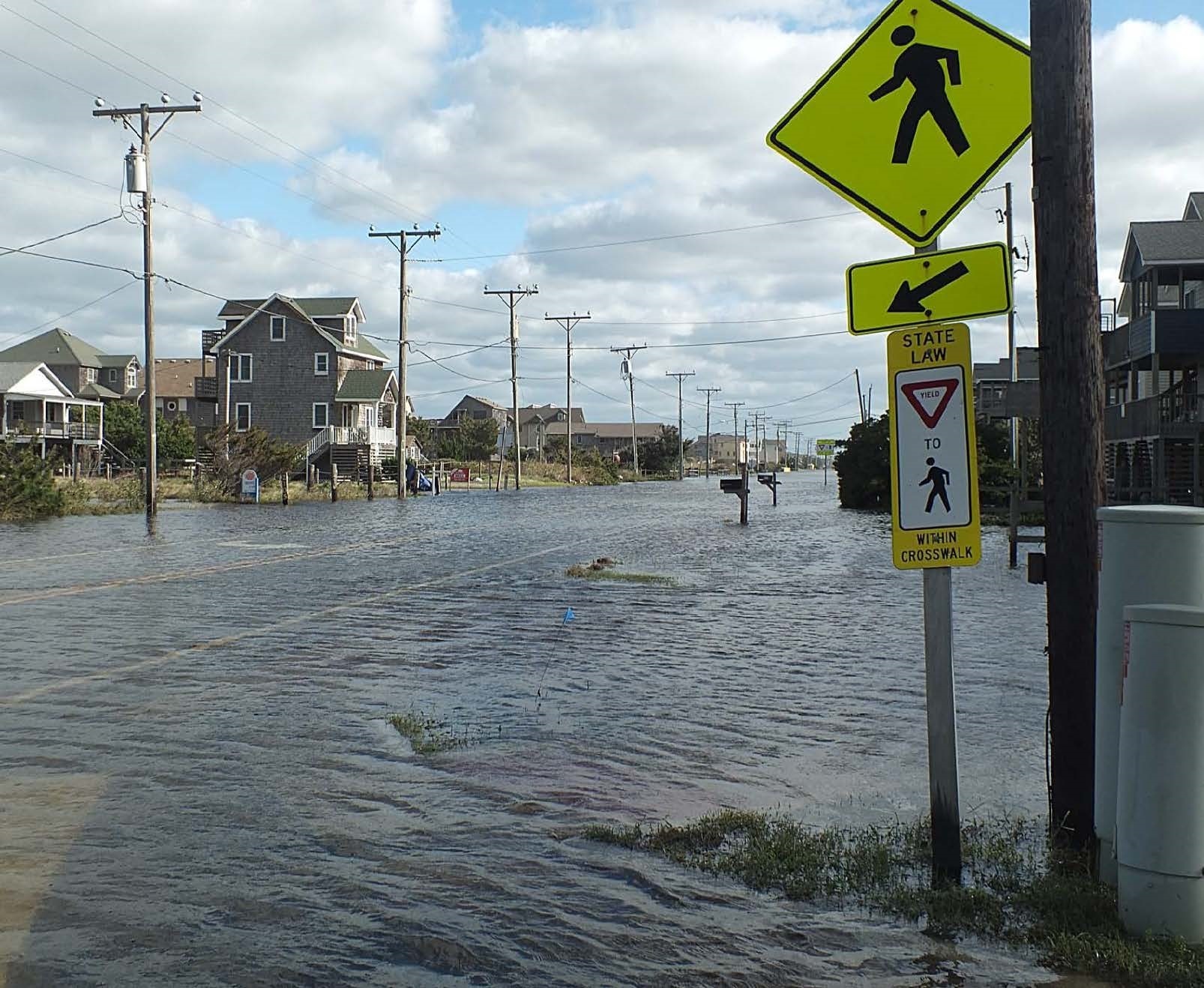
Dare County is set to receive more than $4.2 million to elevate 31 homes that have a history of flooding during hurricanes and other storms.
The funding announced Thursday by North Carolina Emergency Management and the Federal Emergency Management Agency’s Hazard Mitigation Grant Program is available because of the federal disaster declaration after Hurricane Florence in 2018.
Supporter Spotlight
North Carolina Emergency Management works with FEMA to help state, local, tribal and territorial governments to prepare for impacts or recover from damage caused by natural disasters.
The Dare County homes to be elevated using the $4.2 million are in Avon, Buxton, Frisco, Hatteras, Kill Devil Hills, Kitty Hawk, Manns Harbor, Manteo, Nags Head, Rodanthe, Stumpy Point and Wanchese. All are within the special flood hazard area. Elevating the homes to the base flood elevation plus local freeboard requirements will interrupt the costly repetitive cycle of flood damage and repairs, according to information from the state.
“Dare County is excited to receive funding to elevate 31 homes because mitigating flood hazards is a priority for us,” said Bob Woodard, chairman of the Dare County Board of Commissioners, in a statement. “Previously, Dare County has elevated almost 100 homes with FEMA assistance and elevating additional homes will decrease the flood risks for property owners. We look forward to the announcement regarding the additional applications that are under consideration for funding.”

FEMA reimburses 75% of eligible project costs and 25% is covered by the state. FEMA’s cost share for the Dare County project is about $3.2 million with the state covering about $1.07 million.
“The State appreciates continued partnership in assisting all homeowners across the State, especially those impacted so hard by Hurricane Florence. Supporting the elevation of these homes allows us to assist both the homeowners and the county simultaneously,” State Hazard Mitigation Officer Steve McGugan said in a statement. “The next step is for the state and local governments to procure a contractor, which may take several months. Once a contractor is selected, the property owners will be advised of the project timeline.”
Supporter Spotlight
So far this year, the state and FEMA have approved millions through the grant program that assists homeowners move out of dangerous flood zones, have their homes elevated or have their homes torn down and rebuilt to code with an elevated foundation.
In addition to the funding for Dare County, a hazard mitigation project grant of $691,610 was awarded to Craven County Aug. 13 to elevate four residential structures in Havelock and New Bern.
In June, $976,710 was approved to remove five residences in Harnett and Pender counties that flooded after Tropical Storm Michael in 2018 and more than $1.6 million for Beaufort County acquire, demolish and remove 19 homes flooded after Hurricane Florence. More than $6.5 million was approved to purchase 31 homes in Pender County in May to be demolished. After the structure is removed from a property, it’s turned into open space in order to conserve natural floodplain functions.
Hazard mitigation includes long-term solutions that help reduce or eliminate rebuilding costs from future disasters. This mitigation planning breaks the cycle of disaster damage, reconstruction and repeated damage, according to the state. Also, according to a 2019 report from National Institute of Building Sciences found that federal grants save $6 per $1 cost. “Public-sector investment in mitigation since 1995 by FEMA, EDA, and HUD cost the country $27 billion but will ultimately save $160 billion, meaning $6 saved per $1 invested.”
Brian R. Haines, public information officer for the state Department of Public Safety, under the Division of Emergency Management, told Coastal Review that hazard mitigation assistance is broken down into disaster grants and nondisaster grants.
“After federally declared disasters, FEMA provides funding through a disaster grant,” he said. “Using the funds set aside into the disaster grant, North Carolina Emergency Management and FEMA work with communities to nominate, review and award projects focused at reducing or eliminating future impacts to people and property from natural hazards.”
Nondisaster grants are recurring annual competitive grants. Haines said that North Carolina Emergency Management, or NCEM, works with local governments to identify projects that reduce risks and vulnerabilities associated with natural disasters.
Like with disaster grants, NCEM and local governments work together to nominate these projects to compete at the FEMA national level for funding.
Examples of hazard mitigation projects include buying homes in the special flood hazard area, or SFHA, or 100-year floodplain, and removing them or elevating those homes in the SFHA so that the first floor is a minimum of 2 feet above the 100-year flood level. Properties are determined to be in the special flood hazard area based on both historical data as well as modeling of floodwaters, considering changing drainage patterns and upstream growth.
Through the state’s efforts over the last 30 years, more than 4,000 homes have been acquired and turned into green space.
“The ownership of all properties acquired under the hazard mitigation program remains with the local counties or municipality that purchased the home,” he said.
The properties, in accordance with federal law, purchased under the program must remain as green space to ensure the natural flow of water in the floodplain and prevent any future development that would again have to be covered by the National Flood Insurance Program.
Other examples of hazard mitigation projects include providing wind retrofits to buildings to protect against wind damage, demolishing and reconstructing badly damage homes at the proper elevated level, and providing stormwater gauges and early warning systems to allow people to evacuate before becoming trapped by floodwaters.
“In North Carolina, you can visit flood.nc.gov, North Carolina’s Flood Information Center, to learn what your flood risk is and determine if you live within the SFHA or floodway. Additionally, the state’s Flood Inundation Mapping and Alert Network (FIMAN) allows the public to see real-time data on stream elevation, rainfall and weather parameters from over 550 gauges across North Carolina,” he said.
Haines emphasized that it’s important for people to understand that nearly everyone has some risk of flooding and the best way to recover is to have flood insurance, as homeowners’ insurance does not cover flood losses.
“Flood insurance policies are available for residential buildings and commercial buildings as long as the community participates in the National Flood Insurance Program. There is also separate contents coverage, so renters can get flood insurance too,” he said.
“Because of North Carolina’s mitigation planning effort, the state is considered an Enhanced State by FEMA and qualifies for 5% greater federal funding per declared disaster than a nonenhanced state,” he said. “Currently there are only 14 enhanced states in the US.”
The 14 states that have earned FEMA approval for their enhanced state mitigation plan are now eligible to receive more funds under the Hazard Mitigation Grant Program following a disaster declaration. To receive approval of an enhanced plan, a state must show that it has developed a comprehensive mitigation program and is capable of managing increased funding for its mitigation goals, according to FEMA.
The hazard mitigation program is a product of the 1988 Robert T. Stafford Disaster Relief and Emergency Assistance Act, commonly known as the Stafford Act, and later refined by the Disaster Mitigation Act of 2000.
In addition to the Hazard Mitigation Grant program, Emergency Management oversees the Flood Mitigation Assistance program, Pre-Disaster Mitigation program, Repetitive Flood Claims program and Severe Repetitive Loss pilot program.







